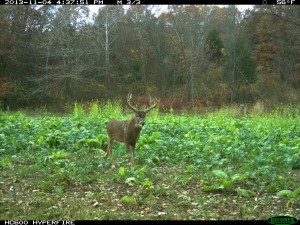
Steve Bartylla talks Common Sense Deer Approach
Steve Bartylla talks Deer
Steve Bartylla added 5 new videos.
Todays tip is simply to apply the Keep It Simple Stupid marketing approach to hunting and deer & land management, with a side of creativity. Nothing we are doing out in the deer woods is rocket science. Don’t try to make it into that. As importantly, run away from those that pretend they’ve figured out these complex riddles and have all the answers, BUT you have to buy my book, my services or products to understand, as it’s just too complicated to explain. The only thing that’s too complicated to explain is how they’re trying to separate you from your $$$$.
Deer can do somewhat complicated things, but they are ultimately dumb animals, without the power of analytical thought. Everything about them revolves around their survival, perpetuating the species, achieving comfort and filling their stomachs. It really is that simple. They look up in trees in heavily hunted areas for no other reason than we’ve trained them to do so to survive. They run the other way on heavily hunted grounds when they hear rattling, just because so many of us yard apes have tried rattling them in on that same ground so many times before. There are simple reasons behind dang near everything important that they do.
At the same time, don’t confuse KISS with not using our most powerful weapon to its fullest. Specifically, be creative and you will find KISS solutions to many, many things.

Look at a common scenario. We have a 20 acre farm field that the deer are feeding in regularly. The problem is that they’re coming out all over the place. There’s no such thing as a “safe wind” and it doesn’t matter much anyway, as the odds of the buck you want to kill using that one or two trails you’re covering today just isn’t good anyway.
Steve Bartylla talks Deer
That’s where creativity and being unwilling to just settle for what you have come into play. What happens if you hinge cut a 5-10 yard wide band of trees along that field edge (edge feathering)? You just increased browse levels from those tops now being at mouth level and all the new growth that will occur from that band of ground now getting sun. So, our field is now more attractive and offering more food than before.
At the same time, that edge feathering serves as a visual screen. Now, the bucks that want to know what’s in the field need to leave the woods and enter it to see who’s there. That’s another plus for us.
To create those “safe” winds, be sure you hinge the trees between knee and hip height, as well as try to get them to fall in ways that turns that stretch of edge feathering you don’t want the deer entering/exiting through into more of a blockade. Truth be told, it’s hard using just hinge cutting to create impenetrable blockades that deer just can’t cross, but you can sure make it a pain for them. Also, if the trees just aren’t working out well as a blockade, a wooden snow fence or chicken wire ran along that edge will do it for sure, Deer don’t like jumping into that mess of cover, as finding landing spots is a risk.
At the same time, leave a 32″ish wide opening within bow range of your stand, on a trail that’s already being used well, in a safe wind area. Do deer HAVE to use that opening? No, but it sure is a lot easier than crawling through that 5-10 yard wide band of regrowth and criss crossing trees. Slap a scrape tree out front of the stand in the field, bury a water trough next to that opening in the edge feathering and you just gave them two more good reasons to come out there.
Now, all you really have to worry about is getting out safely after dark. So, make yourself a trail out on the backside of the edge feathering. Now, on a PM hunt, you walk in across the field, with the edge feathering hiding you from the deer in the woods and walk out on the back side of the edge feathering, so it’s hiding you from the deer now in the field.
Nothing just covered is complex at all. All we had to do was use our brain to come up with a slightly creative, fairly dang easy/straight forward solution to our problem. The videos below are of deer doing exactly what we want in that exact same situation. The stand is 15 yards off the right side of the vid. It wasn’t a horrible location before, but it was very risky and a frustrating place to sit (great for seeing deer, bad for killing them). As you can see, it’s a great location now, and pretty darn safe/low impact.
KISS, but never be willing to settle for OK, when you can make a few changes and have great, instead.

